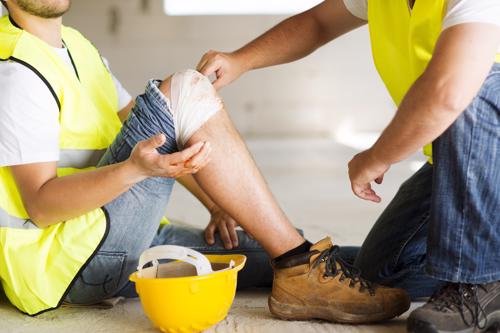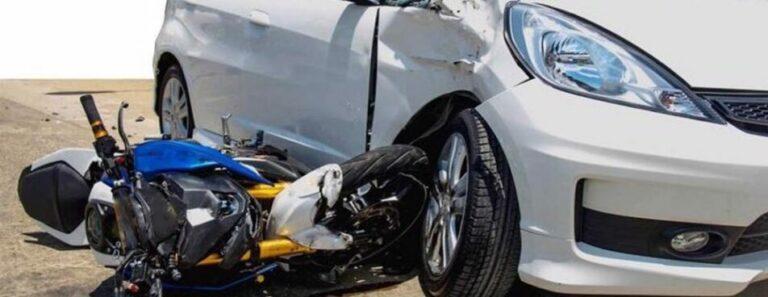- Car Accidents
As Douglasville auto accident lawyers, we’ve helped several clients with different types of injuries from car accidents. These injuries could be minor, severe, or catastrophic injuries. There is another crash injury type that most people are unaware of, and it’s rarely discussed. They are known as crush injuries.
While “normal” car accidents may result in bruises, broken bones, cuts, lacerations, etc., crush injuries occur in high-impact collisions. In this article, we look at crushing injuries in Douglasville auto accident cases. Contact us at the Law Office of John B. Jackson immediately after a traffic collision that results in crush injuries.
What Is a Crush Injury?
According to MedlinePlus, a crush injury occurs when one part of the body gets excessive force or pressure. The pressure causes severe or permanent trauma. This injury type is common in collisions involving passenger vehicles and large commercial trucks, like semi-trucks, tractor-trailers, and 18-wheelers.
Due to the size and weight difference between both vehicles, a passenger car might get crushed beneath a large truck. The preceding is common in rear-end collisions. In addition, crush injuries occur from natural disasters, workplace accidents like construction accidents, or roof collapses.
Following a crush injury, the victim musts experience one of the following:
- Limb loss
- Fractures/broken bones
- Bleeding
- Bruising
- Compartment syndrome (it refers to increased pressure in an arm or leg that results in severe muscle, nerve, blood vessel, or tissue damage)
- Lacerations (open wounds)
- Nerve injury
- Infection (when bacteria enters the body through the wound)
When motor vehicles crash at high speed, there’s a significant likelihood of a crush injury. The impact force could smash the car’s front, sending the engine into the passenger compartment. It could also happen when a car flips over, leaving the occupants wedged under a twisted metal.
This injury is also common in pedestrian accidents, motorcycle accidents, and bicycle accidents. For instance, a backup auto accident involving a pedestrian might pin the person against a wall. The preceding is expected when the victim was in the driver’s blind spot or the motorist carelessly put their car in reverse.
What Is Crush Syndrome?
Crush syndrome occurs due to prolonged, continuous pressure or large crushed muscles. When the person remains confined, the muscles tissues don’t get enough blood and tissue, causing damage. But once the pressure gets relieved, the blood and oxygen return to the affected area resulting in an inflammatory chemical reaction.
Consequently, the victim may suffer tissue damage, metabolic abnormality, and organ dysfunction. Crush syndrome would result in one or more of the following complications:
- Acute lung injury
- Cardiovascular instability
- Compartment syndrome
- Hypotension and hypovolemic shock from fluid shifting back into damaged cells resulting in blood loss
- Paralysis and paraesthesia
- Hypothermia
- Renal failure
- Skin injury and swelling
- Metabolic acidosis with lactic acidosis
What Is Compartment Syndrome From a Crush Injury?
An auto accident victim develops compartment syndrome when any portion of their body becomes constricted within a small space than necessary for proper blood flow to maintain healthy tissues. It is a deep tissue injury that causes swelling and bleeding. If not attended to in time, it would cause necrosis, the death of cells.
Furthermore, compartment syndrome could cause a condition known as rhabdomyolysis. The latter is where the content of dead muscle tissue seeps into the bloodstream and causes kidney failure. The risk of compartment syndrome usually necessitates amputation, and in cases where the victim doesn’t get immediate medical treatment, death.
How Do You Treat Crush Injuries?
Immediate medical attention is of utmost importance when dealing with crush injuries due to their different levels of severity. As such, there are various treatment options that might minimize the risk associated with this injury type. Below are some of these treatment methods.
- Using intravenous means to gradually add fluid to resuscitate the crushed area before relieving the pressure
- Alkaline diuresis for ridding the body of toxins
- Surgery to fix necrosis or compartment syndrome
- Antibiotics
- Hyperbaric oxygen therapy
At the accident site, the following first aid steps are helpful:
- Apply direct pressure to the injury site to stop the bleeding
- Cover the area with a wet cloth or bandage and raise the injury site above the heart level
- If there’s a suspension of a neck, head, or spine injury, immobilize those areas, and limit movement to the crush injury site.
Did You Suffer a Crush Injury? Let Experienced Douglasville Auto Accident Lawyers Help You
At the Law Office of John B. Jackson, we understand the life-long impact crush injuries can have. Thus, we’ll work tirelessly to prove the fault party’s guilt and get you past, current, and future damages. Your welfare is our topmost priority, so call today to schedule a free case review.





